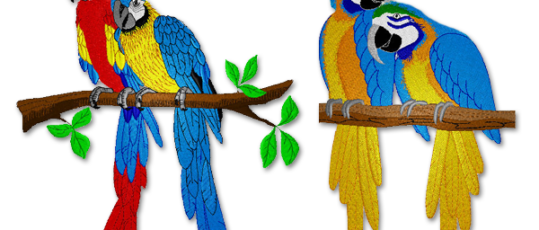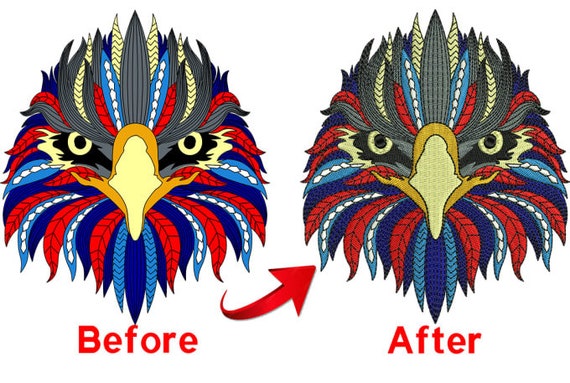Expert Digitizing for Embroidery: Fast and Reliable Solution
Wiki Article
Grasping the Embroidery Digitizing Process: Your Ultimate Guide
Needlework digitizing is a careful craft that requires accuracy and expertise to equate detailed designs right into digital layouts for machine embroidery. As artisans embark on this trip to master the needlework digitizing procedure, a thorough understanding of the essentials establishes the foundation for quality.
Comprehending Needlework Digitizing Basics
Needlework digitizing essentials develop the foundation upon which detailed styles are translated into machine-readable layouts for accurate stitching. This preliminary action in the needlework digitizing procedure is critical for making certain that the final embroidered item is a devoted depiction of the initial layout. Comprehending needlework digitizing fundamentals entails grasping essential principles such as stitch kinds, stitch direction, thickness, padding, and draw compensation.Sew kinds play a vital duty in establishing the aesthetic and textural outcome of the embroidered style. By selecting the ideal stitch kind, whether it be satin, fill, or running stitch, digitizers can accomplish the desired impact and improve the total quality of the needlework. Furthermore, stitch instructions influences the circulation and dimension of the style, while thickness figures out the spacing and coverage of the stitches.
In addition, rug sewing provides security to the layout by protecting the textile and stopping distortion during the needlework process. Pull payment is one more important factor to consider to neutralize the all-natural tendency of material to contract when stitched. Mastering these embroidery digitizing basics is basic for creating professional-quality embroidered items.
Choosing the Right Digitizing Software
Selecting the suitable digitizing software application is an essential decision that significantly influences the efficiency and high quality of the embroidery digitizing process. Digitizing for Embroidery. When choosing the ideal digitizing software program, it is necessary to take into consideration elements such as the complexity of styles you prepare to develop, the user-friendliness of the software, the degree of client assistance provided, and the compatibility with your needlework equipmentThere are numerous digitizing software program choices available in the marketplace, ranging from standard programs for newbies to sophisticated software program for professional digitizers. Some preferred choices include Wilcom EmbroideryStudio, Hatch Needlework Software, and PulseID. These software supply a vast array of devices and attributes to help you develop intricate designs easily.
Before deciding, it is a good idea to discover the various software program choices with cost-free trials or trials to identify which one best fits your needs. In addition, checking out evaluations and seeking recommendations from skilled digitizers can offer useful insights right into the strengths and weaknesses of each software (Digitizing for Embroidery). By very carefully evaluating your requirements and contrasting the features of different digitizing software program, you can make an enlightened choice that improves your embroidery digitizing operations
Digitizing Tools and Techniques

Optimizing Design Settings for Needlework
Mastering the ins and outs of layout setups is fundamental in achieving ideal results in the needlework digitizing procedure, building upon the structure laid by comprehending digitizing tools and methods. When optimizing design setups for needlework, it is crucial to consider factors such as stitch type, thickness, rug, draw compensation, and right here enrollment. Enrollment setups straighten various components of the style precisely, keeping overall style stability.
Troubleshooting Common Digitizing Issues
When experiencing typical digitizing problems throughout the embroidery process, it is necessary to understand the origin triggers and apply effective remedies promptly. One usual problem is stitch density concerns, where stitches may be also thick, causing the fabric to pucker, or too thin, resulting in voids in the design. Readjusting the stitch thickness setups in the digitizing software application can assist fix this issue.An additional frequent obstacle is string breaks throughout the embroidery process. This can occur as a result of various factors such as incorrect tension settings, plain needles, or making use of low-grade string. Making sure correct maintenance of the embroidery maker, consisting of normal needle changes and tension changes, can lessen the incident of thread breaks.
Moreover, layout registration mistakes can result in misaligned elements within the embroidery style. Inspecting the layout positioning in the Discover More digitizing software application and making needed changes before sewing can aid in avoiding this concern. By resolving these common digitizing concerns quickly and efficiently, you can guarantee a smoother needlework process and high-quality ended up products.
Final Thought
Finally, mastering the needlework digitizing process calls for a solid understanding of the basics, the appropriate selection of software application, and expertise of tools and techniques. Optimizing more tips here layout setups and repairing common digitizing issues are crucial actions in making certain high-grade needlework outcomes. By following these steps faithfully, one can accomplish accuracy and performance in the digitizing procedure.Report this wiki page